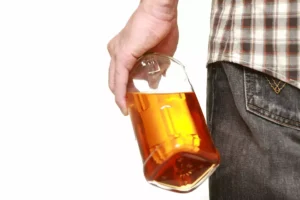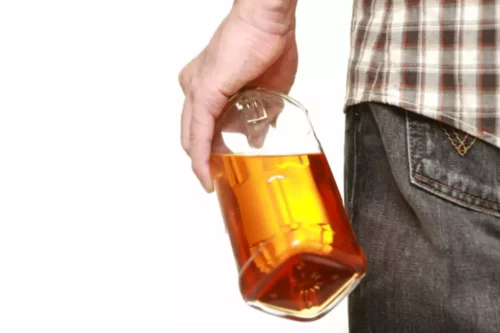
As a result, various studies have investigated the potential interactive effects of alcohol with daytime alertness and daytime functioning in both healthy people and patients with sleep disorders. Nevertheless, abnormal PSG findings are commonly reported in chronic opioid users despite development of tolerance. These abnormalities include increased sleep latency 100, 185, increased awakening 100, 113, 185, 190, decreased total sleep time 100, 185, and decreased sleep efficiency 100, 190.
SUBSTANCE ABUSE AND SLEEP
For the literature search, Pubmed, Ovid Medline, and Web of Science databases were used. In addition to extracting data available in each of the retrieved articles, reference lists from each retrieved article were examined to identify articles missed by the initial search. For each drug, the available literature on subjective measurements, objective measurements, the relationship between subjective and objective measurements, clinical and laboratory correlates of sleep outcomes, and pharmacotherapies related to sleep were summarized.
1 Acute effects of alcohol on sleep: repeated administration
- Indeed, limited evidence supports this possibility, although the literature also points to pathways that are multifactorial and complex.
- Yules, Freedman, and Chandler (1966)studied three young non-alcohol dependent, men over 5 nights of drinking, with 1g/Kgethanol administered 15 minutes before bedtime.
- Earlier, we discussed a simplified anatomical framework that identifies some of the relevant links for this comorbidity, but there are likely other pathways and substrates, some of which still need to be discovered.
- As a result of these frequent awakenings, people tend to clock fewer hours sleeping after drinking alcohol.
- Third, the same alcohol dose may have different effects in healthy people and insomniacs.
Orexin neurons are activated by reward and project to the DA neurons in VTA that innervate the nucleus accumbens and mediate reward, which they also influence does alcohol help you sleep via their direct projections to it. Postmortem brains of heroin users showed increases in orexin neuron numbers in the lateral hypothalamus and reverse translation studies verified that chronic opioid administration in rodents also increased the number of orexin neurons in their lateral hypothalamus. The upregulation of orexin would be expected to create a state of hyperarousal and may underlie the insomnia observed both in treated and non-treated opioid users. Preclinical studies, demonstrating that orexin microinjection into the VTA increases cocaine self-administration and reinstates cocaine-conditioned place preference, also implicate orexin in cocaine’s rewarding effects. It has been suggested that orexin is specifically engaged in substance abuse during elevated motivational states, such as when the effort to obtain the drug is high 29 or when animals are stressed 31. For example, orexin antagonists only affect self-administration under conditions that require a relatively high effort, such as progressive ratio schedules, or when drug seeking is triggered by cues or stress, suggesting that it may be particularly active during relapse.
- Chronic sleep problems were defined as those when participants who reported a sleep problem (based on the above dichotomy) at three or more data collection phases over the follow-up period.
- Poor connectivity (i.e., deficitsin white matter integrity) likely also contributes, although relations between evokedpotential amplitude and diffusion tensor imaging (DTI) measures of white matter integrityare yet to be tested.
- Additionally, or alternatively, the rebound in delta power after acute withdrawal 148, despite poor sleep and decreased slow-wave sleep time, may improve the subjective experience of sleep quality 122, 148.
- There are limited numbers of studies looking at the effect of buprenorphine on sleep.
National Institute on Alcohol Abuse and Alcoholism (NIAAA)
Slow-wave sleep time 113, 114, 185, 190 and REM sleep are decreased compared to baseline 113, 185, 190, 205, while duration of stage 2 sleep is increased similar to acute use 190, 205. Analysis of actigraphy data from patients with prescription opioid use disorders indicated poor sleep in terms of total sleep time, sleep efficiency, sleep latency, total time awake, and time spent moving 100. Several studies examining sleep in persons with alcohol use disorders also reported data on fragmentation of sleep. Sleep fragmentation reflects awakenings or switching from a deeper to a lighter stage of sleep, and is measured by the number of switches from one stage of sleep to another, the number of awakenings, and the time spent awake after sleep onset.
In two studies, gabapentin improved the sleep of recovering alcoholic patients.64–66 Karam-Hage and Brower64 used gabapentin (mean dose 953 mg/day) to treat 15 of 17 consecutively evaluated abstinent alcoholic patients with persistent insomnia of at least four weeks in an open label study. Self-reported sleep quality improved over 4–6 weeks of treatment and all but two patients remained abstinent. Buprenorphine was FDA approved as a pharmacotherapy for opioid use disorders in 2002. Buprenorphine has the advantage of being available from office-based practices 131.
- However, no consensus exists with respect to REM time and studies have reported decreased, no change 163, or increased 111 REM time.
- The solid arrows reflect the rich literature supporting bidirectional effects between sleep and substance abuse, and the cumulative human and animal evidence supporting the acute effects of substance use on circadian parameters.
- Total night REM sleep percentage is decreased in the majority of studies at moderate and high doses with no clear trend apparent at low doses.
- For many people who drink moderately, falling asleep more quickly may seem like an advantage of a nightly glass of wine.
- Using this procedure, de Wit and colleagues (1987, 1989) found that moderate drinkers who preferred an alcohol dose of 0.5 g/kg, which corresponds to approximately three drinks, in the laboratory tests felt less alert at that time than did drinkers who did not prefer alcohol.
Several studies have reported changes in patterns of sleep with progressive abstinence from opiates. At around 5–7 days of acute abstinence from chronic heroin use, Howe et al. reported decreased total sleep time, slow-wave sleep, REM, and stage 2 sleep and increased sleep latency, wake after sleep onset, and REM latency compared to healthy sleepers 101 (Table 2). During the first 3 weeks of abstinence, prolonged sleep latency, decreased sleep efficiency, decreased TST, increased arousal index, increased stage 1 and 2, and decreased slow-wave sleep (SWS) were prominent compared to healthy sleepers 17 (Table 2).

Alcohol and the Sleeping Brain
It may also take the body longer to eliminate medication, prolonging its intended effects. As many medications impact sleep, it can be challenging to identify which medication may be causing your sleep problems. Monitoring and adjusting your medications over time can help you ensure they are effective and avoid potential adverse effects. Be sure to discuss any sleep problems with your health care provider and review your medications and any supplements you take with them at each visit.

Other ingredients that may affect you at night

However, the vast majority of this research is on people who are heavy drinkers or have alcohol use disorder. Many OTC sleep aids contain diphenhydramine, an antihistamine and active ingredient in Benadryl. Diphenhydramine should be avoided by older adults because as we age, our metabolism slows down, which increases the amount of the medication that stays in our bodies, prolonging the medication’s effects. Your deep restful sleep tends to be more prevalent in the first few hours but decreases during the second half. The homeostatic drive is responsible for keeping our body balanced, and it’s one of the major mechanisms that regulates the sleep-wake cycle. The homeostatic drive prompts sleep by boosting levels of adenosine when we’ve been awake for too long.
